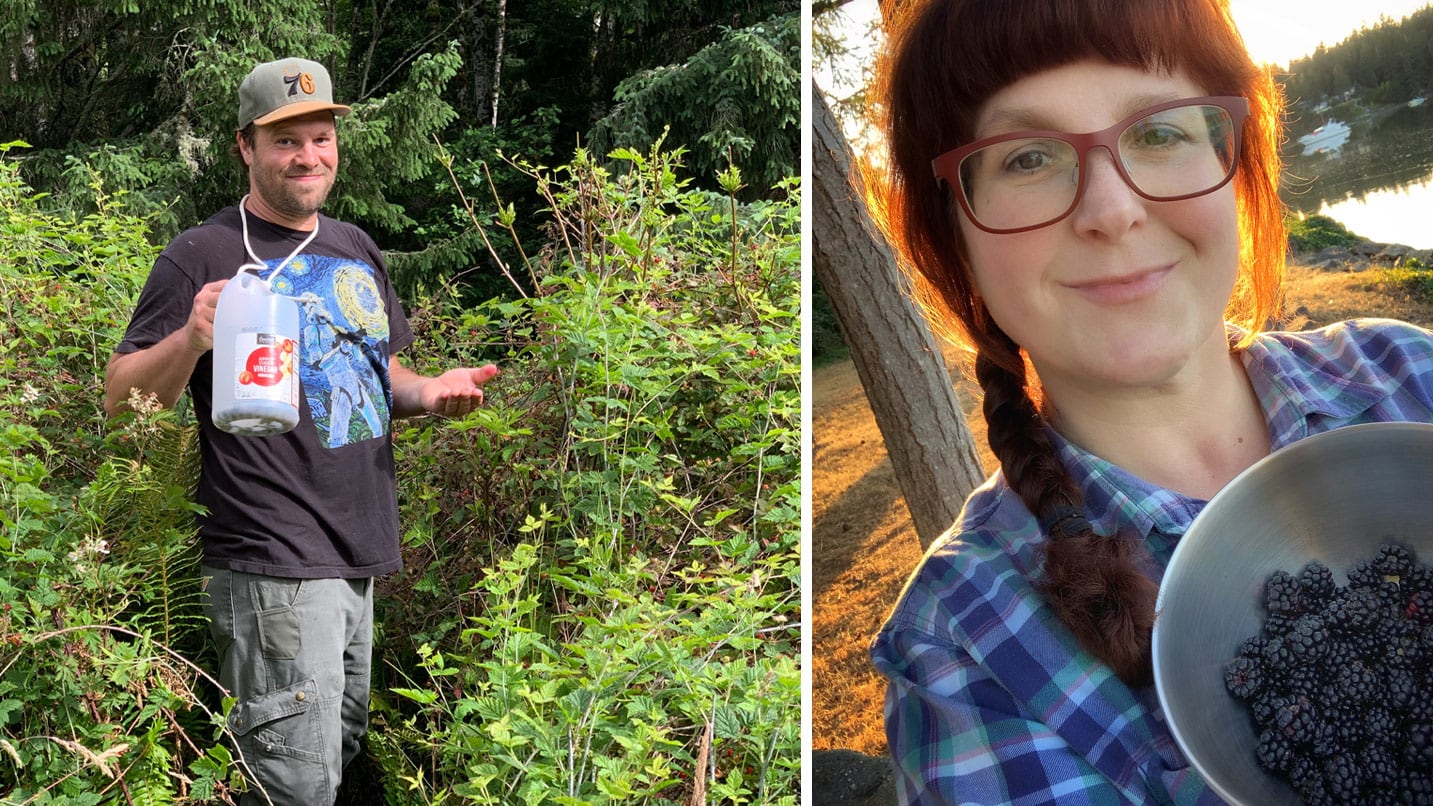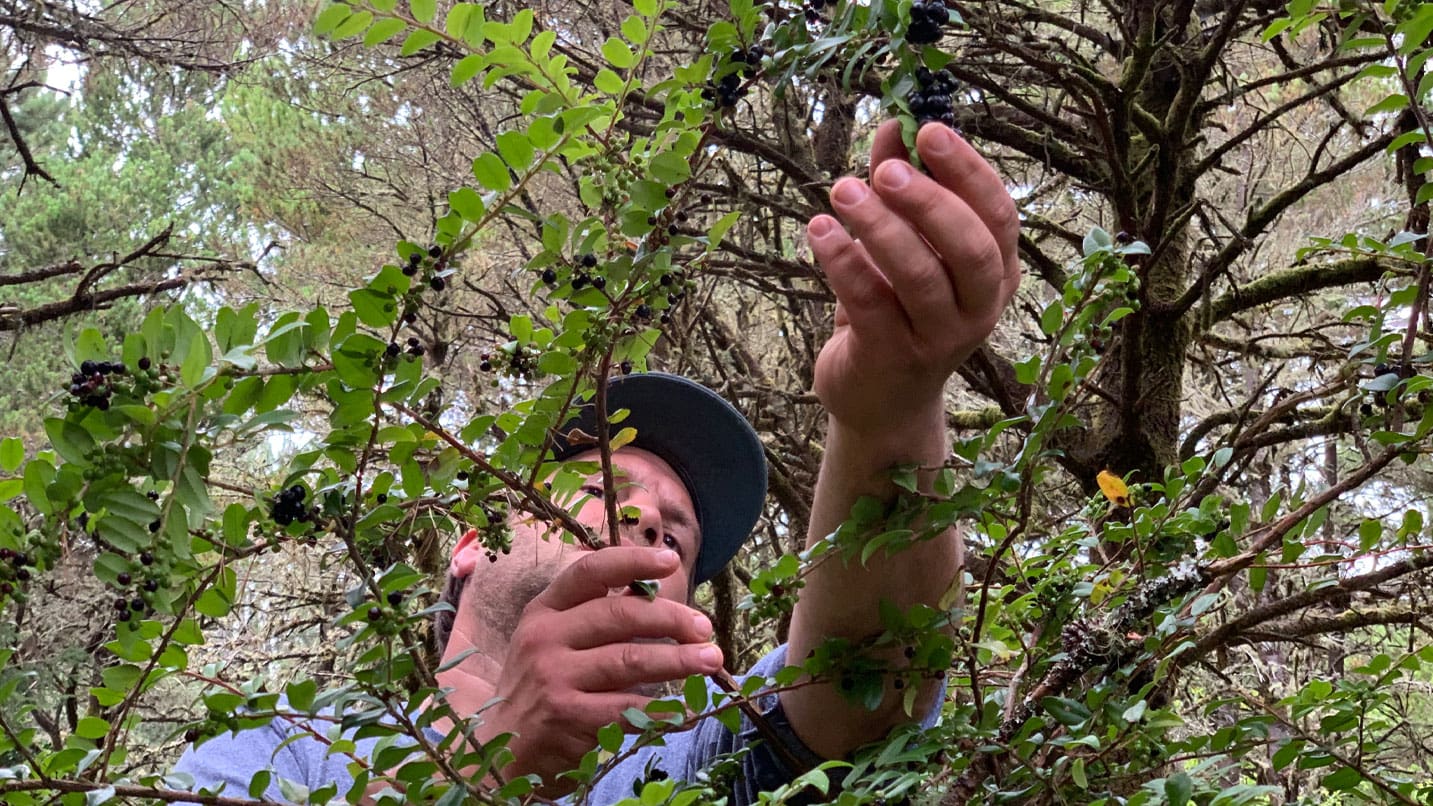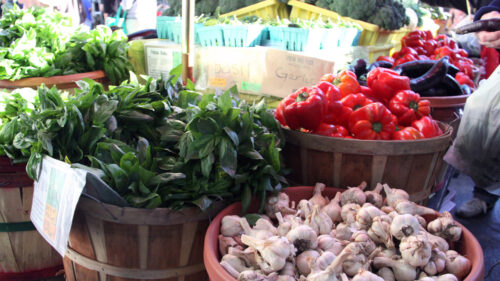To the joy of foragers like me, wild berries that flourish each summer mean you don’t need anything more than a bucket and an identification guide to collect pounds of juicy, jeweled fruit. With homemade berry pie or jam on the horizon, many families head out to their special spots for a time-honored tradition from July to October. Though you can easily buy farm-grown blackberries at markets or mountain-foraged huckleberries at stands or through CSAs in season, there’s nothing like the incomparable pride of foraging your own in the Oregon wilderness. Here are some tips to get you started with two of the most common berries, blackberries and huckleberries.

Know What You’re Picking
First, a word of caution: Be absolutely sure that you’re picking the right species when you collect berries, as some look-alikes can make you very sick.
Berry foraging seems to be more of an art handed down through oral tradition than taught in workshops, so a good Oregon foraging guide with photos for identification will come in handy. Most foraging books are excellent for the basics, but for a deep dive, try a book that specializes in berries, like this one. Another resource is Pacific Northwest foraging groups on Facebook, where you can post questions about where to go and what to avoid. You’ll want to stay on public lands only, of course, but learn how to steer clear of areas traditionally used by tribal gatherers.
Wild Blackberries Everywhere
Wild blackberries, which grow maniacally all over Western Oregon, can be found in any areas where the natural landscape has been changed by paths, roads or other interventions. Look for the thickets of the invasive Himalayan blackberry — with aggressively thorny canes that can grow 15 feet high and 40 feet long — anywhere there’s ample sun from August to October. Carefully navigate through mounds of telltale brambles along roads, around the edges of parks and parking lots, along railroad tracks, on stream banks, and even growing on unmanaged fences as you journey down neighborhood alleys.
(Pro tip: Some rural roadsides are sprayed with herbicides to keep aggressively growing Himalayan blackberries and other plants at bay, so look for signs of dying plants and avoid picking in these areas.)
In Central Oregon, wild blackberries can be sourced from lakesides on the eastern slopes of the Cascades. You won’t find too many in the eastern part of the state, but keep an eye out on mountain hikes near a lake, river or stream.
Once you’ve mastered picking Himalayans, try two more varieties that are a bit harder to find but worthwhile. The smaller — some say tastier — Oregon native trailing blackberry ripens on the Oregon Coast and inland valleys in early July. The evergreen or cutleaf variety produces tasty berries in the waning days of summer (late August into September). These are easy to distinguish by the clues in their names: Trailing blackberries grow in long, thin canes close to the ground, especially in areas that have been logged or burned. The cutleaf blackberry has deeply cut, jagged leaves that distinctly contrast to the Himalayans’ rounder, larger leaves and much thicker canes.
Berries are always freshest in the morning. Pick early in the season, as there are fewer bugs and blackberries tend to be firmer, more acidic and less watery then. Wearing a hat, long sleeves, and long pants will protect you from the sun but also from scratches from the thorny brambles. And if you do get scratched, remember the old saying that it’s not summer in Oregon until the first blackberry draws blood.

Head to the Hills (or Coast) for Huckleberries
Huckleberry picking is a time-honored autumn tradition in the Pacific Northwest, with berries so cherished, they’re on the list of many tribes’ first foods. You can find some of the nearly dozen varieties — all similar in size and shape to their cousins, the cultivated blueberry — in various habitats, from lower-elevation coastal forests to sub-alpine meadows.
On the Coast in September and October, any hike on forest trails near the ocean will reveal the small, leathery-leaved shrubs of tiny, shiny black or deep-blue coastal huckleberries. Taste as you pick: Some bushes produce berries that are more bitter or ripen more slowly.
A common sight along the trails or roads through North Coast forests and clear-cuts are ruby-red huckleberries, which like to grow in bushes out of old-growth conifer stumps or nurse logs. They also grow inland along moist forest edges from sea level to about 3,000 feet. An old-timer’s secret is to combine the tart red berries with trailing blackberries for an especially delicious pie.
In the Cascade and Klamath mountain ranges, two similar species, the mountain huckleberry and oval-leaf huckleberry, are king. Larger and less grainy than the coastal huckleberry, and bursting with a tart, complex flavor and firm skin that leave commercial blueberries in the dust, the huckleberries that grow in the mountains are worth the trouble journeying to their preferred habitat of 4,000 to 6,000 feet in elevation when they ripen in August and September.
In fact, mountain huckleberries are so popular that generations of overpicking for commercial use has resulted in protective regulations in certain areas. Though Mt. Hood National Forest and Klamath National Forest in Southern Oregon are huge tracts of land, limits and permits help manage the harvest. In areas with restrictions, you may only pick a gallon a day and no more than 3 (Hood) or 5 (Klamath) gallons per year.
Call a U.S. Forest Service ranger on-site wherever you set out for a mountain-huckleberry excursion to ask about the best picking spots that week, as they change frequently in the short season, and free berry-picking permits are necessary in some places. (As of April 2022 pickers do not need a permit for berry picking in Mt. Hood National Forest, but check with the ranger’s office before you go just to be sure.)

If You Go:
- Know the rules and limits of any park or public area in which you’re planning to forage. Each forest managed by the U.S. Forest Service has its own website for specific policies related to berry gathering and telephone numbers to call rangers with questions.
- Practice sustainable harvesting: Only pick a small amount from each plant and no more than 10% of a patch. Do not use huckleberry-raking devices, which can strip leaves and damage branches.
- Bears rely on huckleberries for a significant percentage of their diet in-season. Carry jingle bells or sing as you pick to alert them of your presence.
- Insects like berries, too. Look carefully before reaching under blackberry leaves or else you might get stung, for example, by a surprised yellowjacket.
- Avoid any areas with evidence of herbicide spraying. You’ll see visible wilting on plants along the road or significant amounts of yellowing or dead leaves.


